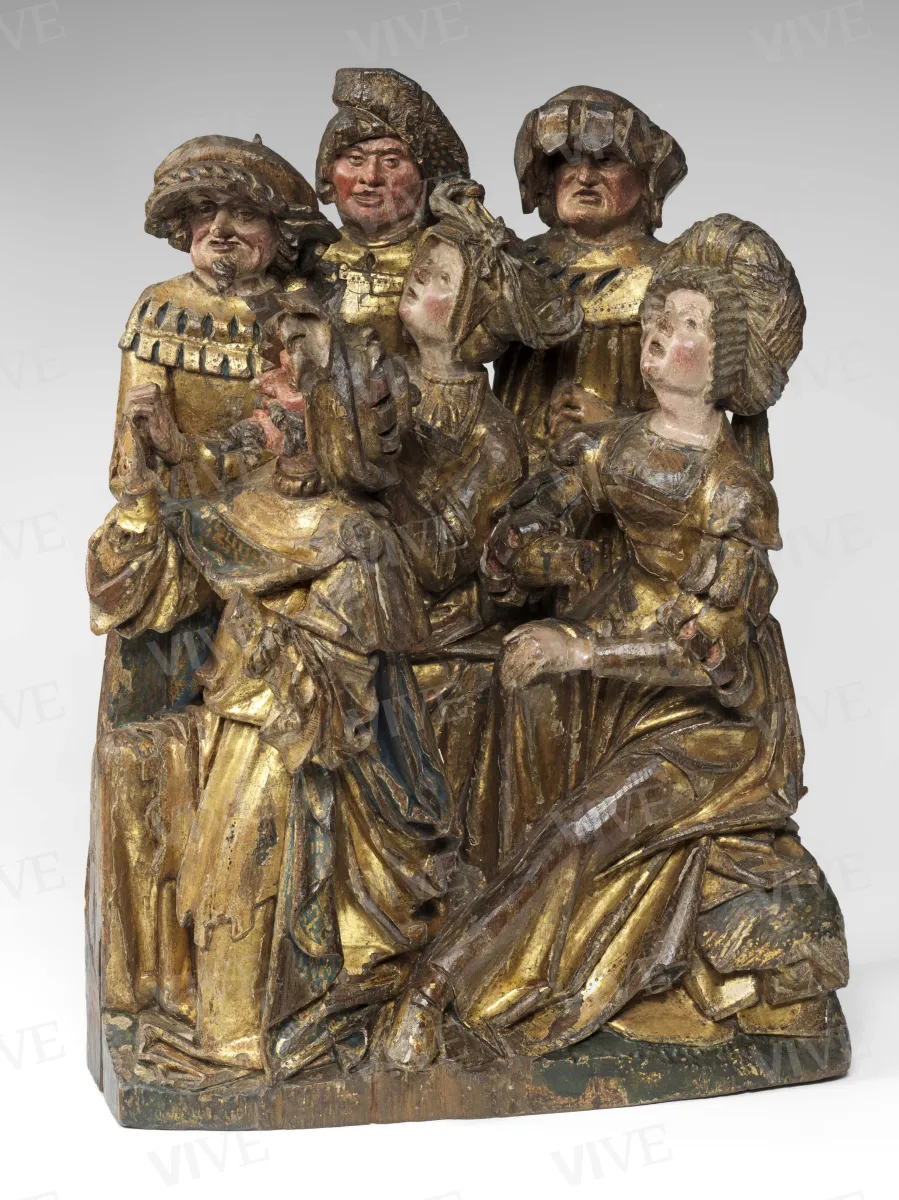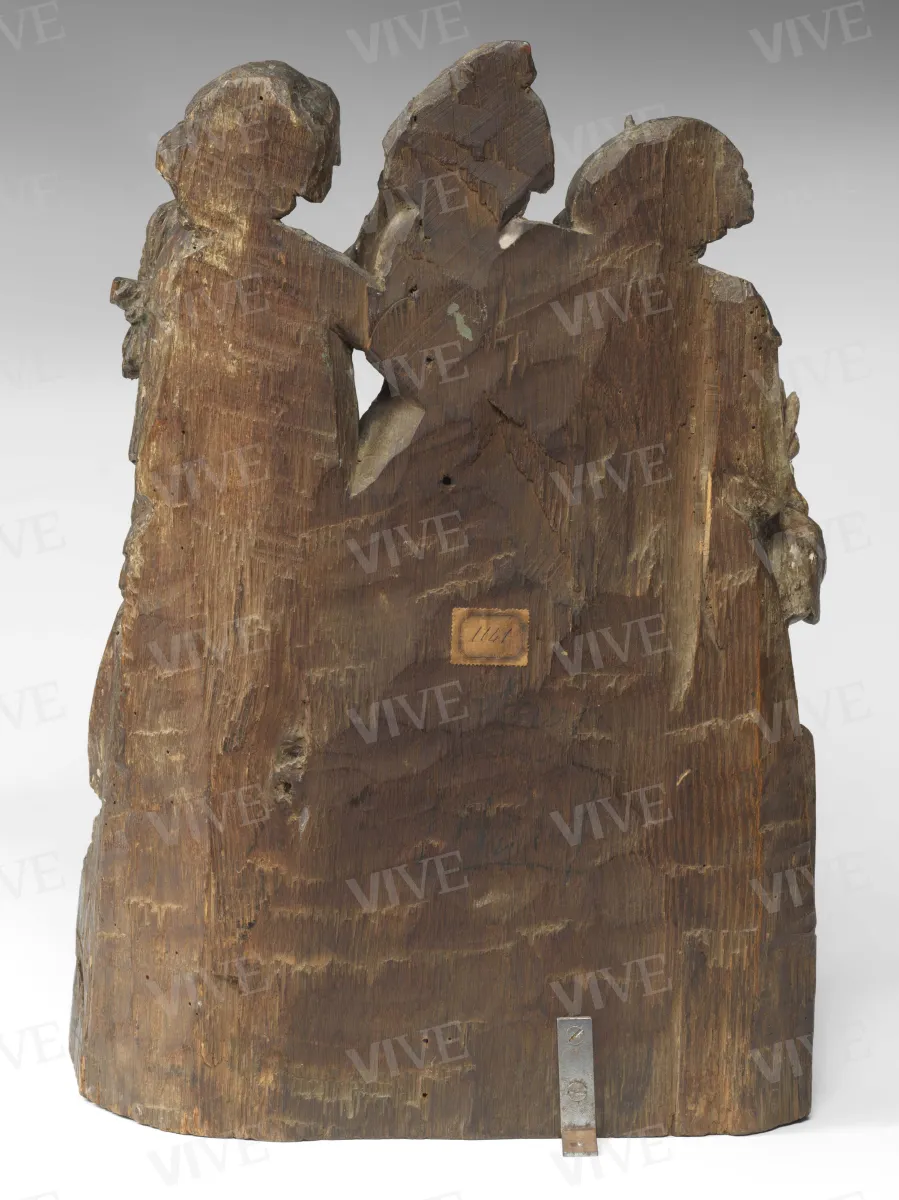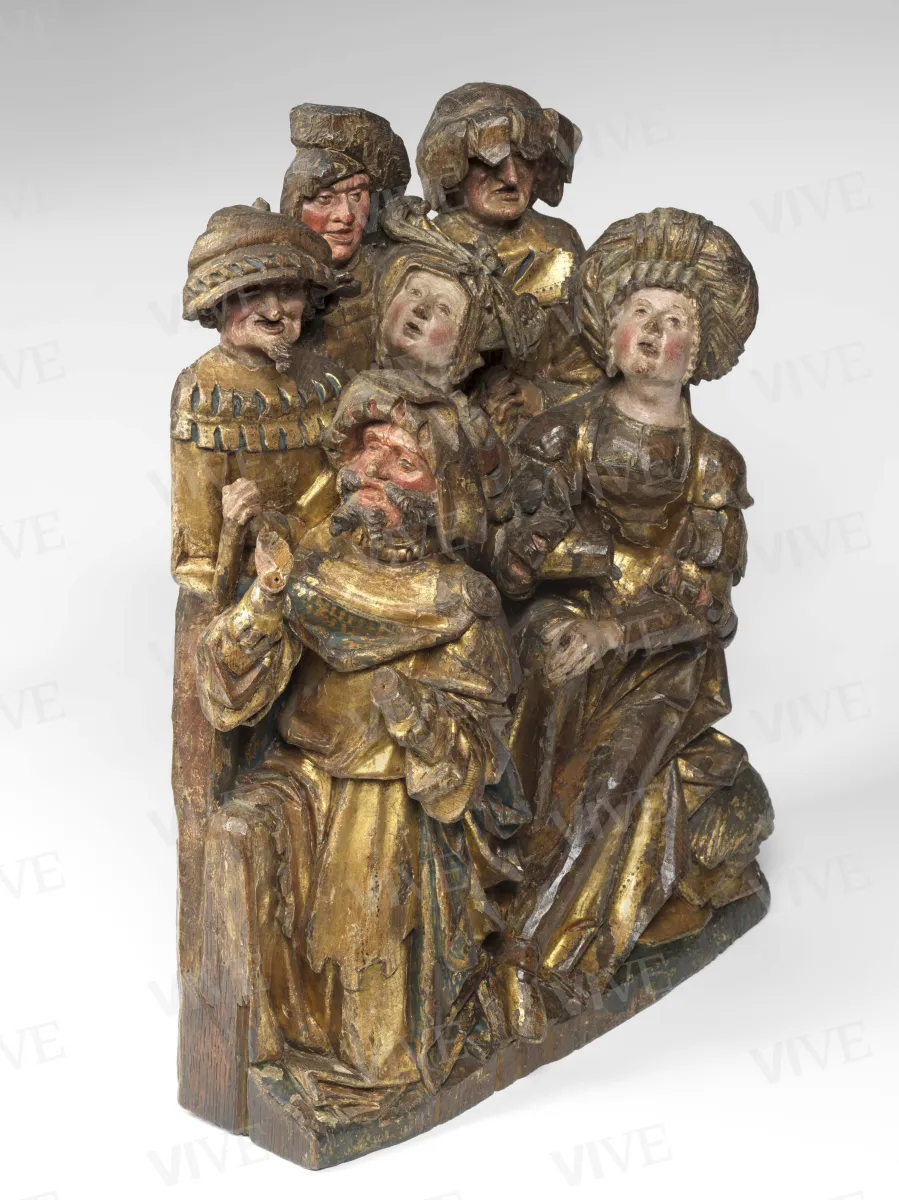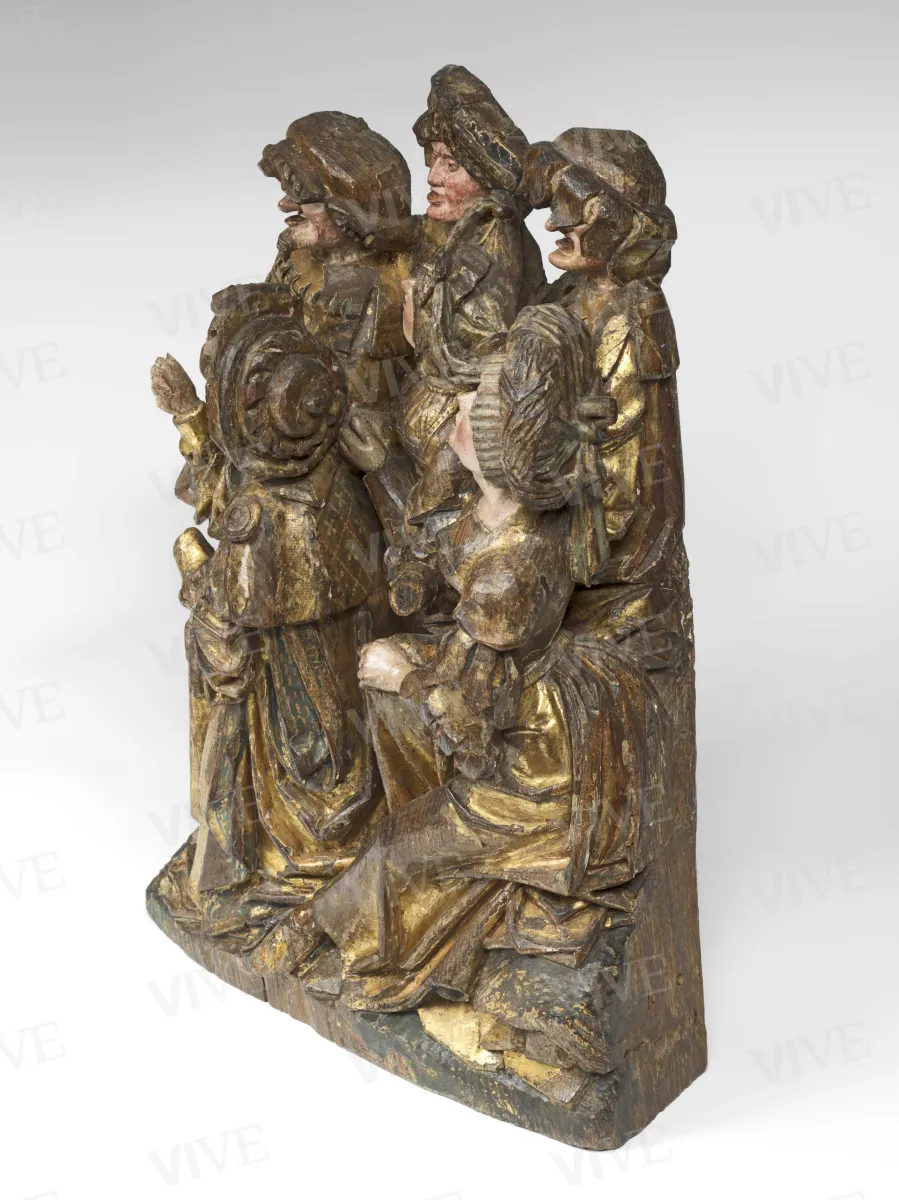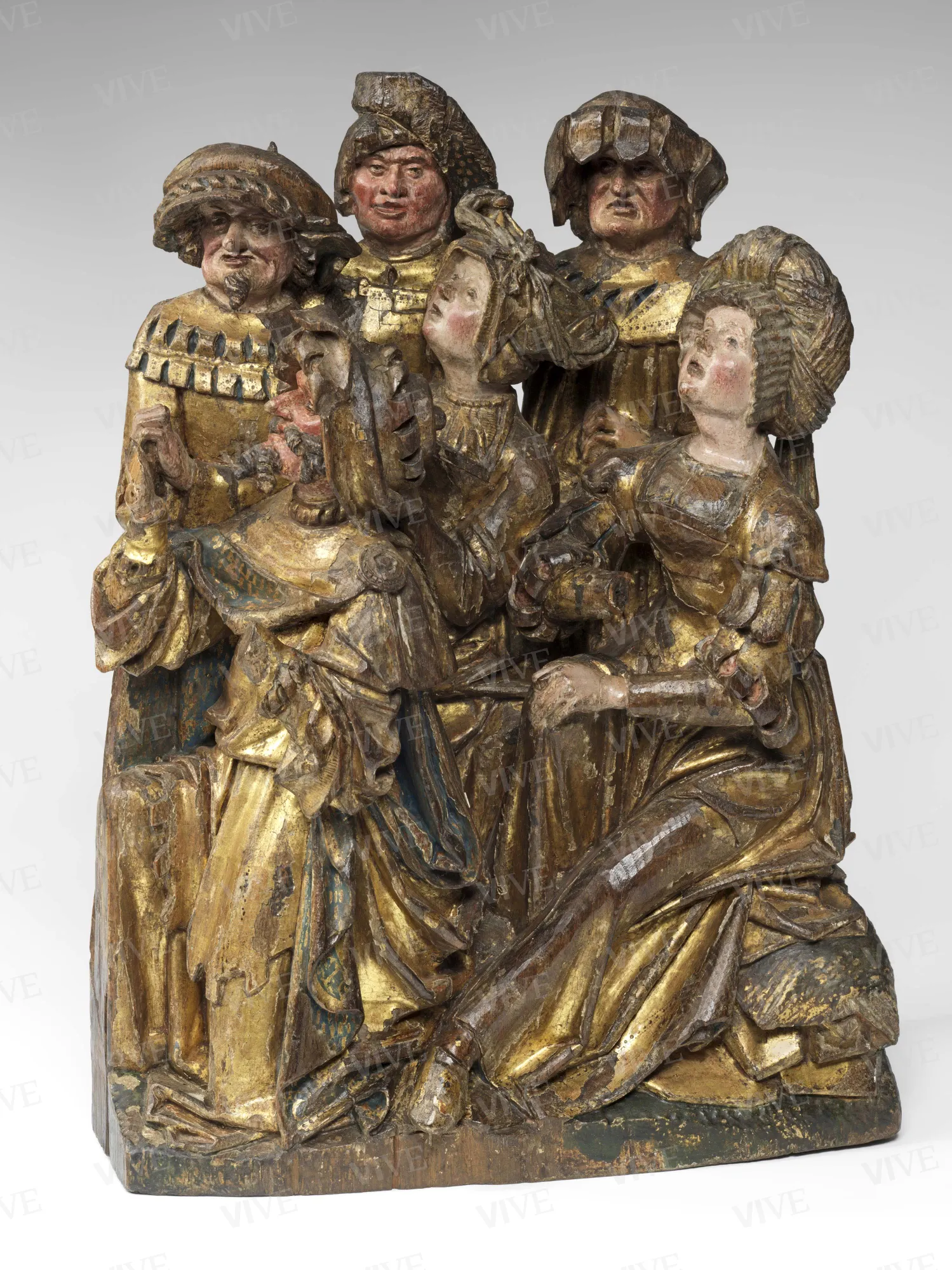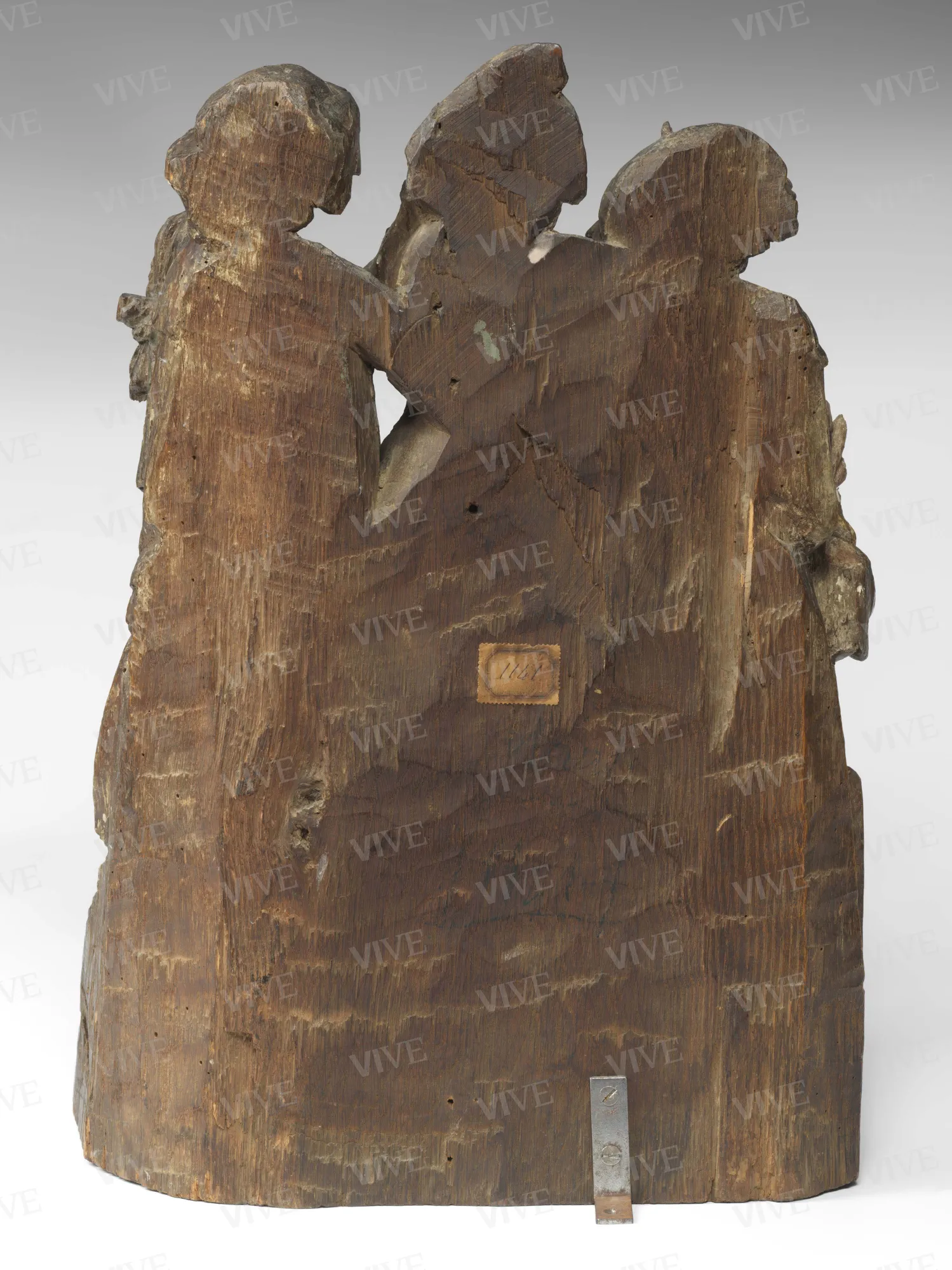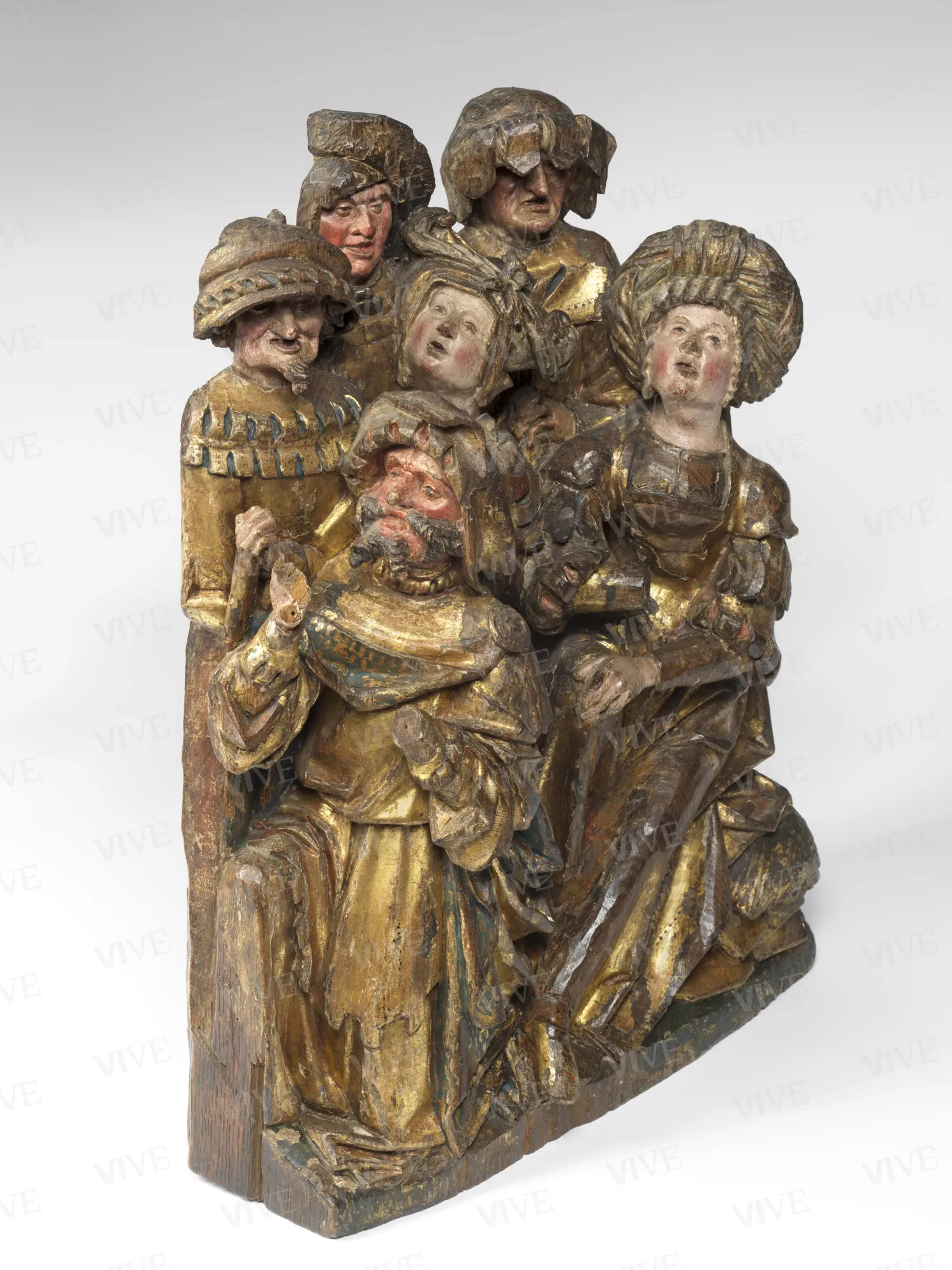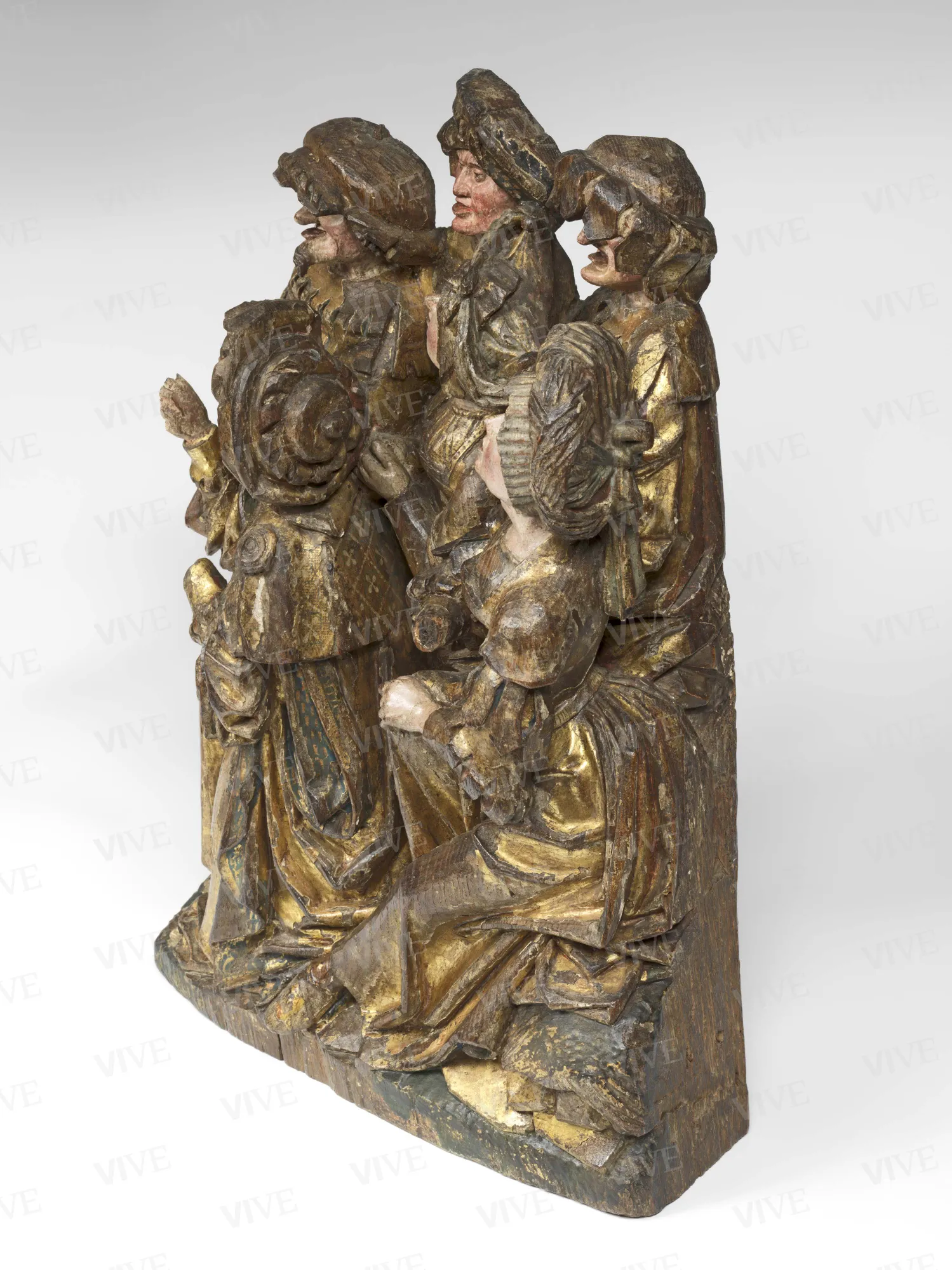Bystanders
Milieu Borman workshop 1490-1520
The sculpture, carved in high relief from a single block of wood, portrays a group of figures appearing to witness an event and may be part of a larger composition, possibly a Crucifixion. The material, technical, executional, and stylistic characteristics indicate that it originated from a Brabante workshop influenced by the Borman workshop, both notable for Flemish sculpture between the fifteenth and sixteenth centuries.
The sculpture, carved in high relief from a single block of wood, portrays a group of figures appearing to witness an event and may be part of a larger composition, possibly a Crucifixion. The material, technical, executional, and stylistic characteristics indicate that it originated from a Brabante workshop influenced by the Borman workshop, both notable for Flemish sculpture between the fifteenth and sixteenth centuries.
Details of work
Catalog entry
The sculpture, meticulously carved in high relief from a single block of wood, portrays six individuals—four men and two women—with distinct and individualized expressions. In the foreground, a seated woman gazes upwards in amazement, mirroring the direction of the man kneeling before her and the female figure immediately behind them. In the background, three men with broad faces, aquiline noses, and thin mouths appear indifferent to the scene that captivates the other figures. The intricately sculpted robes of each character are adorned with gilding and polychromy, some of which were executed using the “sgraffito” technique.
The incomplete state of the work, including missing limbs on the two main figures and faded polychromy, makes interpretation challenging. Nonetheless, its size and compositional features suggest it was originally part of a more complex structure. Federico Hermanin (1948) proposed that it represented a Crucifixion, while Antonino Santangelo (1954) suggested that the bystanders were participating in an Adoration of the Magi or an Ascension, hypotheses that Grazia Maria Fachechi (2011) also considers valid. While this remains speculative, Hermanin's proposal is plausible, identifying the male figure in the foreground as Longinus, the Roman soldier who pierced Christ's side during the crucifixion. The positioning of the arms suggests the presence of a spear, which has since been lost along with both hands.
Hermanin identified the origin of the work as Flanders, specifically the area of Brabant, and categorized it under the Antwerp School. Santangelo later confirmed this reference, linking the piece to the grand altar pieces of Jan I Borman, who was the founder of a significant family of sculptors influential in the development of figurative art between Leuven, Antwerp, and Brussels for over a century (c. 1450–1550).
Indeed, the style of the work reflects the characteristics of many Low-Flemish sculptures produced from the late fifteenth century onwards. The sophisticated robes and almost caricatured faces of the four men are reminiscent, for instance, of the polyptych of Saint George in Leuven (now in the Musées Royaux d'Art et d'Histoire in Brussels) or the altar with the Passion Scenes in the Schnütgen Museum in Cologne (no. A 1095). In particular, the contrast between the rendering of male faces and the apparent idealization of female faces perfectly reflects the characteristics of works produced in the region where “facial types are polarized between the idealized and the grotesque’ (Woods 1996, p. 788). Dendrological analyses, already published by Grazia Maria Fachechi, were also able to confirm the use of oak wood - a material favored by sculptors in the area.
The style of this work reflects characteristics commonly found in many Low-Flemish sculptures produced from the late fifteenth century onwards. The sophisticated robes and almost caricatured faces of the four men are reminiscent of pieces such as the polyptych of Saint George in Leuven (currently housed in the Musées Royaux d'Art et d'Histoire in Brussels) or the altar with the Passion Scenes in the Schnütgen Museum in Cologne (catalog number A 1095). Specifically, the contrast between the detailed rendering of male faces and the apparent idealization of female faces exemplifies the traits of works from this region, where 'facial types are polarized between the idealized and the grotesque' (Woods 1996, p. 788). Dendrological analyses previously published by Grazia Maria Fachechi have also confirmed the use of oak wood—a material commonly favored by sculptors in this area.
While stylistic and technical analysis supports the work's Brabant origin, its execution quality is lower than other pieces attributed to the Borman workshop. As Ria de Boodt explains (2019, p. 45), there is limited knowledge of individual artists active in Brabant, despite numerous archival documents attesting to the workshop's significant regional influence. Consequently, the attribution should be reconsidered in light of this evidence and go to the work of a contemporary or follower of the workshop, possibly active in Antwerp during the early sixteenth century.
I extend my sincere thanks to Dr. Marjan Debaene for her valuable guidance.
Matteo Chirumbolo
Entry published on 12 June 2025
State of conservation
Good.
Restorations and analyses
2009: IVALSA-CNR of Florence conducted technical-scientific investigations during the new cataloguing of wooden sculptures by Grazia Maria Fachechi.
Provenance
Rome, Collection of George Washington Wurts and Henrietta Tower;
Rome, Museo Nazionale di Palazzo Venezia, donated by Henrietta Tower Wurts in 1933
Exhibition history
Florence, Palazzo Strozzi, Mostra d’arte fiamminga e olandese dei secoli XV e XVI, May–October 1947, out of catalogue.
References
Hermanin Federico, Il Palazzo di Venezia, Roma 1948, p. 271;
Santangelo Antonino (a cura di), Museo di Palazzo Venezia. Catalogo delle sculture, Roma 1954, p. 67.
Woods Kim W., Five Netherlandish Carved Altarpieces in England and the Brussels School of Carving c. 1470-1520, in «The Burlington Magazine», 138, 1996, pp. 788-800;
Fachechi Grazia Maria, Sculture in legno del Museo Nazionale del Palazzo di Venezia, Roma 2011, pp. 122-123, n. 57;
de Boodt Ria, The Shop Floor of the Brussels Sculptor. Craft Organization and Workshop Practice around 1500, in Debaene Marjan (a cura di), Borman. A Family of Northern Renaissance Sculptors, catalogo della mostra (Leuven, M-Museum Leuven, 20 settembre 2019-26 gennaio 2020), London/Turnhout 2019, pp. 34-45.

